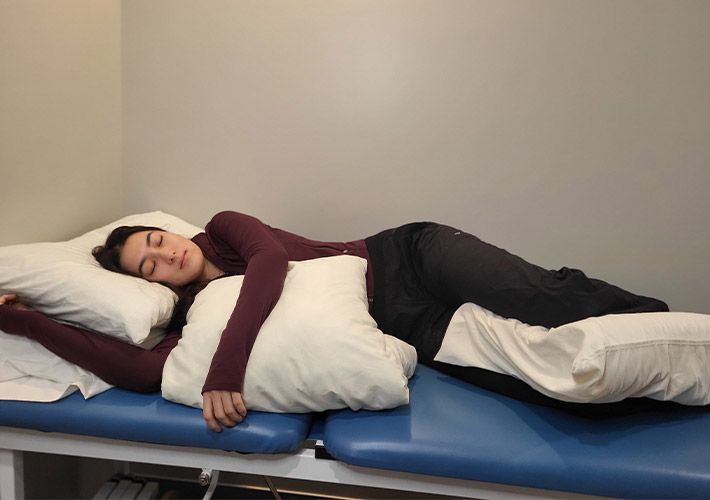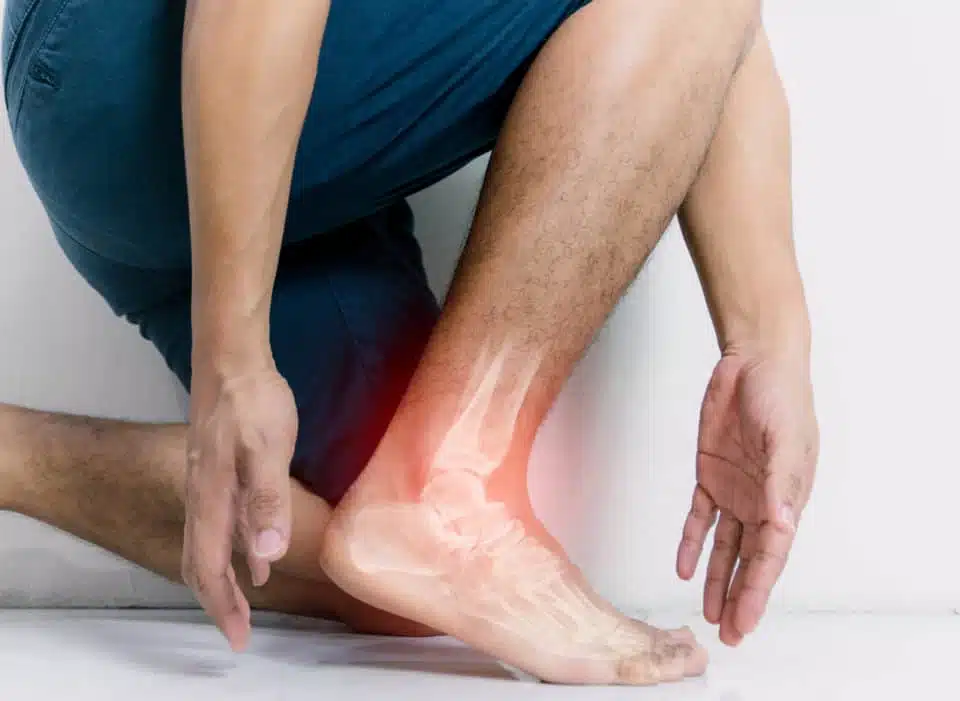Prenatal Massage

8 Reasons You Should Get a Massage During Pregnancy
Pregnancy is an incredible journey — one filled with excitement, anticipation, and, let’s be honest, more than a few aches and pains along the way. As your body adjusts to support your growing baby, your muscles, joints, and circulation all work overtime. That’s where prenatal massage comes in. Designed specifically for the needs of expectant mothers, prenatal massage is a safe and effective way to relieve tension, reduce discomfort, and promote relaxation during pregnancy.
Before booking your appointment, though, always check with your doctor or midwife to ensure massage therapy is safe for your specific situation. Once you have the green light, here are eight great reasons to schedule a prenatal massage.
1. Eases Muscle and Joint Pain
As your belly grows and your posture shifts, your back, hips, and legs often bear the brunt of the extra weight. This can lead to tension, soreness, and even sciatica-like pain. Prenatal massage targets these problem areas with gentle, pregnancy-safe techniques to release tight muscles and improve flexibility.
By relieving tension in the lower back and pelvis, massage can help reduce the discomfort that often comes with your body’s natural adjustments. For many moms-to-be, this translates to easier movement, better sleep, and fewer “ouch” moments getting up from the couch.
2. Reduces Swelling
Swelling in the feet, ankles, and hands is one of the most common pregnancy complaints — especially in the later months. It’s caused by increased pressure on your blood vessels and fluid retention. Massage therapy can help by stimulating circulation and encouraging lymphatic drainage, which helps move excess fluid out of tissues.
A gentle, rhythmic massage can make your legs feel lighter and help you regain a bit of comfort and mobility. Combine that with staying hydrated and propping your feet up when possible, and you may find noticeable relief from that puffy, tired-leg feeling.
3. Improves Circulation
During pregnancy, your body’s blood volume increases significantly to support both you and your baby. Massage therapy promotes better circulation, which can deliver oxygen and nutrients more efficiently throughout your body.
Improved circulation doesn’t just help your energy levels — it can also support healthier skin, aid in muscle recovery, and reduce general fatigue. When your circulatory system is flowing well, you may notice less cramping, less numbness, and even improved mood.
4. Supports Better Sleep
Sleep can become a challenge as your pregnancy progresses. Between frequent trips to the bathroom, an active baby, and general discomfort, restful nights can feel like a distant memory. Massage helps by reducing muscle tension and triggering the release of serotonin and melatonin — hormones that promote relaxation and better sleep quality.
Even one prenatal massage session can help you drift off more easily and stay asleep longer. And let’s face it — you’ll want to bank all the rest you can before the baby arrives!
5. Reduces Stress and Anxiety
Pregnancy is exciting, but it can also be stressful. Between body changes, hormonal shifts, and the anticipation of what’s ahead, it’s easy to feel overwhelmed. Massage therapy helps calm the nervous system by lowering cortisol (the stress hormone) and increasing serotonin and dopamine, which boost mood and promote a sense of well-being.
Taking an hour to unplug, breathe deeply, and focus on yourself can do wonders for your emotional balance. Many mothers report feeling more centered, calm, and connected after a prenatal massage — benefits that ripple through both physical and emotional health.
6. Can Help with Headaches and Sinus Pressure
Hormonal changes and muscle tension can sometimes lead to frequent headaches or sinus congestion during pregnancy. Massage can provide natural relief by easing tight neck and shoulder muscles, improving blood flow, and encouraging sinus drainage.
Certain massage techniques (performed by a therapist trained in prenatal care) can help relieve pressure around the head, neck, and face. Paired with proper hydration and rest, it’s a gentle and effective way to reduce discomfort without relying on medication.
7. Promotes Better Posture
As your baby grows, your center of gravity shifts forward. This often leads to increased curvature in the lower back (lordosis) and rounded shoulders as your body compensates. Over time, this can cause muscle strain and discomfort — especially in the back, hips, and neck.
Massage helps by releasing tight muscles and improving mobility in joints, allowing your body to maintain better alignment. When combined with chiropractic care, prenatal massage can support proper posture, reduce mechanical stress, and keep you feeling more balanced throughout your pregnancy.
8. Encourages Overall Wellness — for You and Baby
When your body feels better, your mind follows — and vice versa. Prenatal massage helps support overall wellness by reducing pain, improving relaxation, and enhancing circulation. Research has shown that regular prenatal massage can even help lower stress-related hormones that may influence fetal development, contributing to a healthier pregnancy experience.
While it’s certainly not a substitute for medical care, prenatal massage can complement the rest of your healthcare routine beautifully. It’s a simple, natural way to nurture your body and prepare for the physical and emotional demands of motherhood.
Massage Safety During Pregnancy
It’s important to note that not all massages are created equal — especially when it comes to pregnancy. Always make sure your massage therapist is trained and certified in prenatal massage. They’ll know how to adjust positioning, pressure, and techniques to keep you and your baby safe and comfortable.
Prenatal massages are typically performed with you lying on your side, supported by pillows or bolsters to relieve pressure on your abdomen and lower back. Therapists avoid deep tissue work in certain areas and are mindful of trigger points that may stimulate uterine contractions.
You should also:
- Check with your doctor or midwife before scheduling your first session, especially if you’re in your first trimester or have a high-risk pregnancy.
- Communicate openly with your therapist about how you’re feeling during the massage — they can adjust pressure or positioning as needed.
- Stay hydrated after your session to help flush out any metabolic waste released during massage.
Massage and Chiropractic Care: The Perfect Pair
At our office, we often see how massage therapy complements chiropractic care for expectant mothers. Chiropractic adjustments can help align the spine and pelvis, improving mobility and reducing nerve irritation, while massage helps the surrounding muscles relax and adapt to these changes. Together, they can create a more comfortable pregnancy experience by supporting the body’s natural balance and preparing it for labor and delivery.
The Takeaway
Pregnancy brings incredible changes to your body — and while those changes are natural, they can also be challenging. Prenatal massage is a safe, effective, and nurturing way to relieve discomfort, reduce stress, and support your well-being throughout every stage of pregnancy.
Whether you’re in your first trimester or nearing your due date, taking time to care for your body helps both you and your baby. Always consult with your healthcare provider before beginning massage therapy, and once you’re cleared, book your appointment with a therapist experienced in prenatal care.
Your body is doing something amazing — it deserves a little extra care along the way.
Bethany Wolcott
D’Youville Chiropractic ‘26












